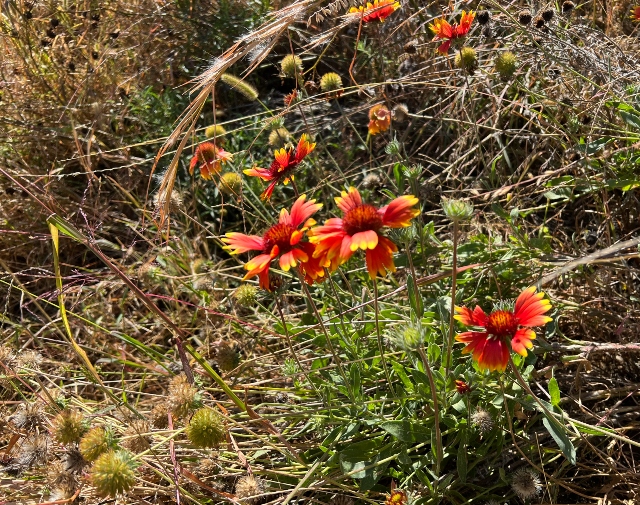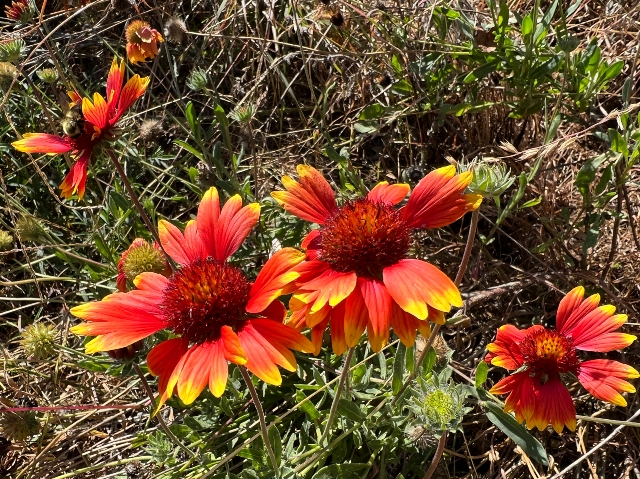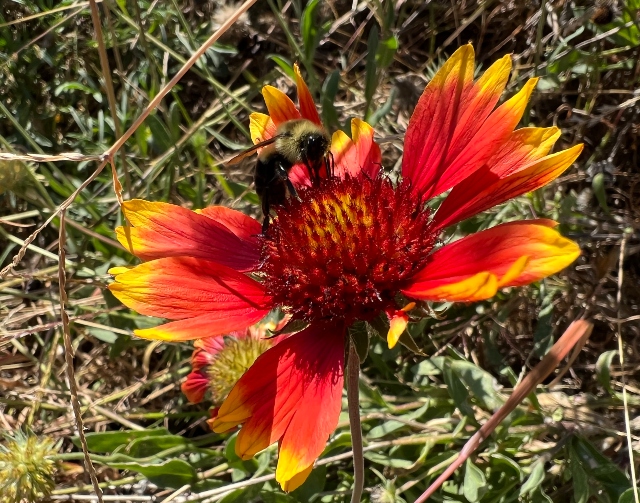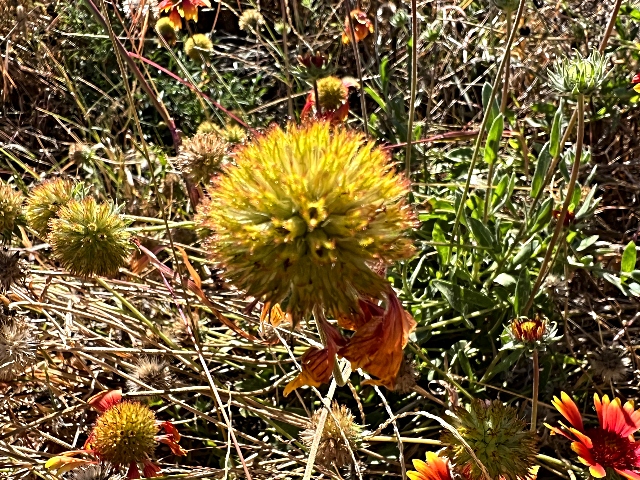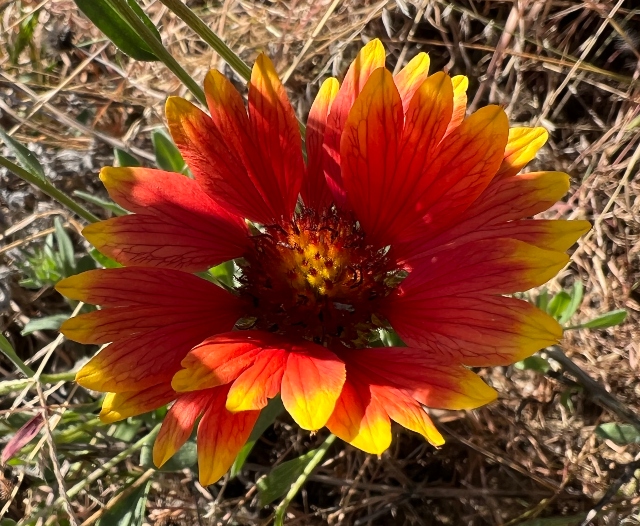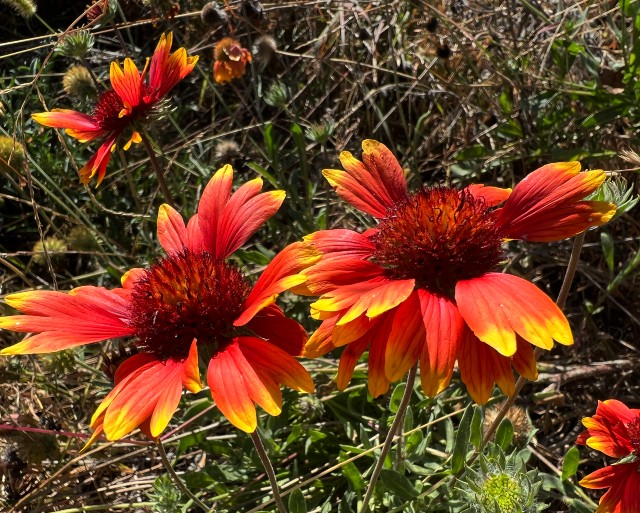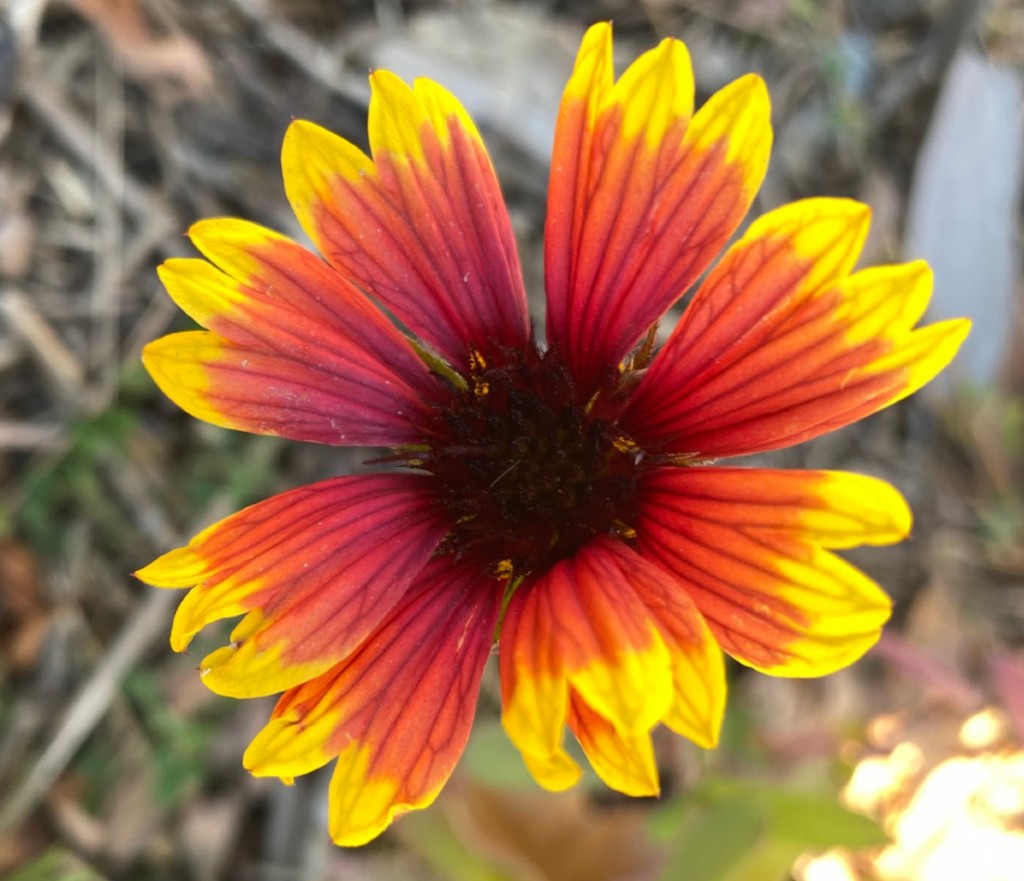While on a hike in Missouri, I noticed this eye-catching plant growing in a dry field. It has a flower that resembles the brightly patterned blankets of Native Americans.
Another possibility for its common name is that it refers to the plant’s habit of “blanketing” the ground in areas where it thrives. Either way, this colorful wildflower is much loved by bees, which are drawn to its bright petals.
The plant also happens to be a food source for caterpillars of the brilliantly colored Gaillardia Flower Moth and Painted Schinia – these insects have wing patterns and colors that mimic blanketflower’s petals.
Blanketflower is often found on the dry slopes and meadows of uplands and mountains. It is drought tolerant and capable of growing under very harsh conditions. It prefers full sun.
Its flowers are typically bicolored with an inner red band surrounded by an outer yellow band. However, they can also be entirely red or yellow, have an inner band surrounded by a white band, or, on rare occasion, be entirely white or yellow.
With the Scientific Name of Gaillardia aristata, the genus Gaillardia was dedicated in 1788 in honor of the early French botanist Gaillard de Charentonneau. Aristata means “bearing bristles” in botanical Latin, in reference to the rough hairy leaves and stems.
Blanketflower has flowers to three inches in diameter, and very hairy, light green, elongated leaves. It typically grows to about a foot tall. This was a neat find on my trip.

